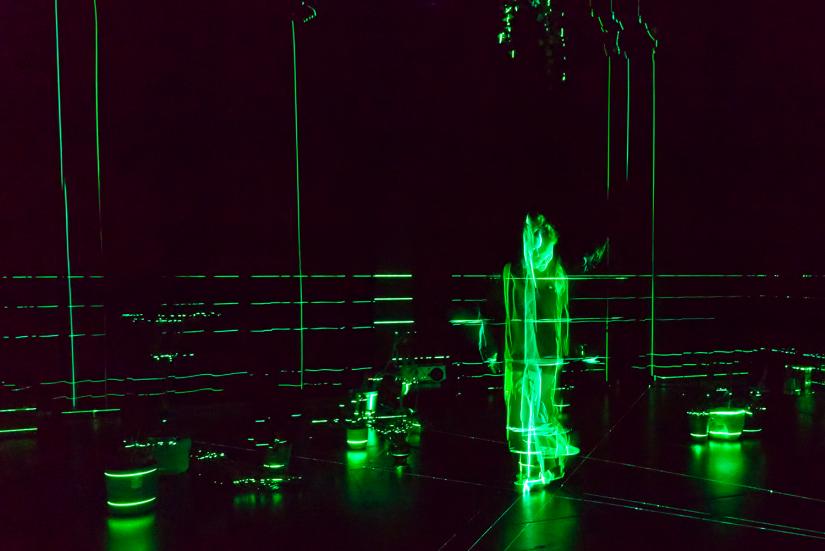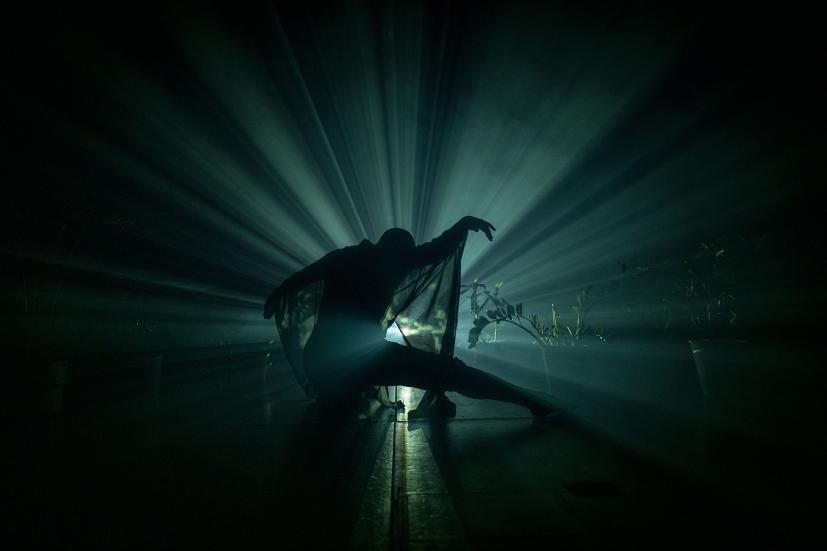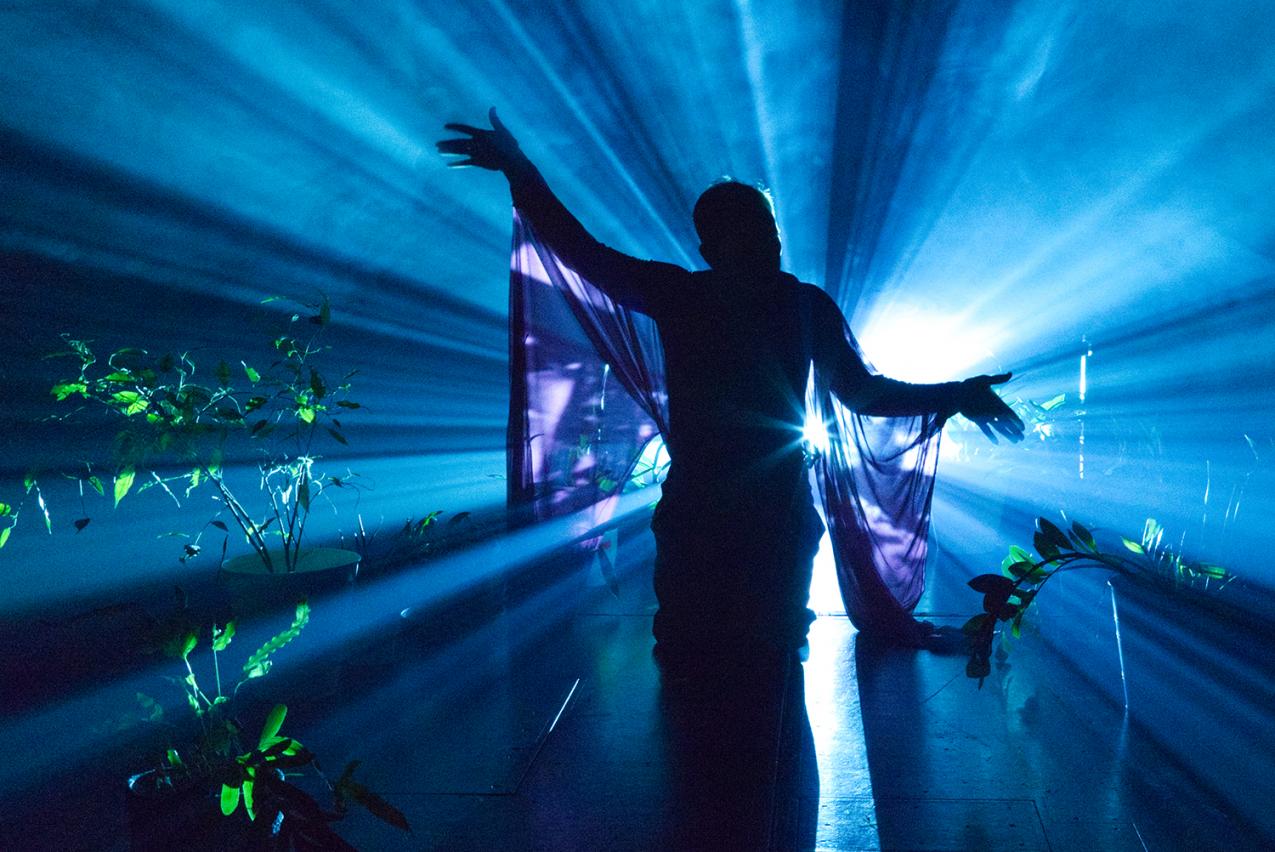IKEBANA – Plant Series VIII is a kinaesthetic inter-species composition, a performance for plants and humans. The piece challenges the spectator to abandon their self-demand to be separate from the nature around us, and invites them to encounter otherness.
Go to the pine to learn about the pine. (Bashõ 1644-94)
In Ikebana, we accept the temporary nature of things and acknowledge the place of humans in the cycle of nature. The method of arranging flowers expresses the change of time; the ability of humans to face the current moment and future challenges. For a species of tree, it takes a thousand years to climb over a mountain, whereas the human perception of time consists of, at its best, only some hundreds of years.
IKEBANA – Plant Series VIII challenges the spectator to abandon their self-demand to be separate from the nature around us, and invites them to encounter otherness. The plants and dancers aim at interconnectedness to set free all aesthetic inner forces of a plant through different forms, positions, and arrangements. Profound understanding of plants might play a crucial role in the continuation of humankind.
IKEBANA – Plant Series VIII is a multispecies performance played by both plants and humans. Thus, the piece is also aimed for plants, and they are allowed to the performance for free with a paying spectator. How often do you take your favourite plant to the theatre?
The sound design of the piece is created together with plants by transforming biological processes for the human ear to hear. After the performance, the audience has the opportunity to play the plants in a Fern Orchestra Plant Jam Session.
#everythingbutphotosynthesisispointless
Fern Orchestra is an art and science collective operating with plants and micro-organisms. Their works highlight the relationship between light, humans, and nature, and include performance art, contemporary dance, publications, and light and sound art. The previous piece of the collective was Mareld, a performance that focuses on the algae Alexandrium ostenfeldii. It is a species of dinoflagellates, which is a 220 million years old micro-organism. In Finnish folklore, the algae that glows in the dark is known as sea-fire or will-o'-the-wisp. The performance was awarded the VALOSÄDE honourable mention for inter-species lighting design.
Working Group: Markus Heino, Vespa Laine, Samuel Salminen, Ilona Salonen, Kalle Suominen, Maileena Vaajoensuu & plants
Production: Fern Orchestra and Regional Dance Center of Western Finland
Collaboration: Turku City Theatre
Premiere: 31.3.2022, Turku City Theatre
Performance photos: Otto-Ville Väätäinen / Turku City Theatre
GUEST PERFORMANCE


